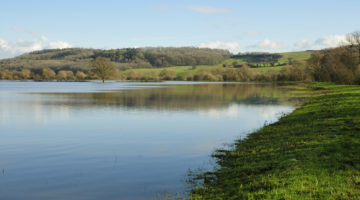
An enormous 2.4 gigawatt-hour pumped storage hydroelectric project has been proposed for construction at Loch Ness, with the potential to double the capacity of Scotland’s renewable energy output.
What is pumped storage hydroelectric power?
Pumped storage hydroelectric power is a pretty simple way of making energy based on two basic ideas.
The first principle is that running water can be harnessed for energy. The system requires two reservoirs, one at high altitude and one at low altitude. When the water is released from the high altitude reservoir, the downflow is directed through high-pressure shafts linked to turbines. This pressure drives the turbines which in turn power the generators that create the electricity. It’s basically a modern day water wheel. Simple!
The second principle of pumped storage hydroelectric is that surplus electricity is available at low-demand times. At current the UK relies on a number of different energy systems that produce power continuously (or at least not on-demand). Sources like wind turbines only produce more energy at night, while nuclear and coal plants must be kept on around the clock to work efficiently, even when most people are asleep and not consuming energy. That means that at night time we are a country creating more energy than we have a use for, and nowhere to put it. This is why the dual tariff exists – it encourages people to use up energy when we have lots to spare, instead of putting pressure on the system all at the same time.

How will it impact Scottish energy?
The project would have an output of 2.4 gigawatt hours, effectively doubling the country’s renewable output. That’s enough energy to power 400,000 homes for 6 hours.
Mark Wilson, part of the company responsible for the project, has said “Pumped storage hydro is the largest and cleanest form of energy storage that currently exists – and a key enabler in helping Scotland meet its green energy ambitions.”
“As well as dramatically improving our energy security, this transformational proposal is a fantastic opportunity for the community to benefit from the energy transition while helping turbo-charge Scotland’s decarbonisation efforts.”
Think we missed something? Do you have a different opinion?
Comment below to get your voice heard…












Is the redjohn project going ahead?